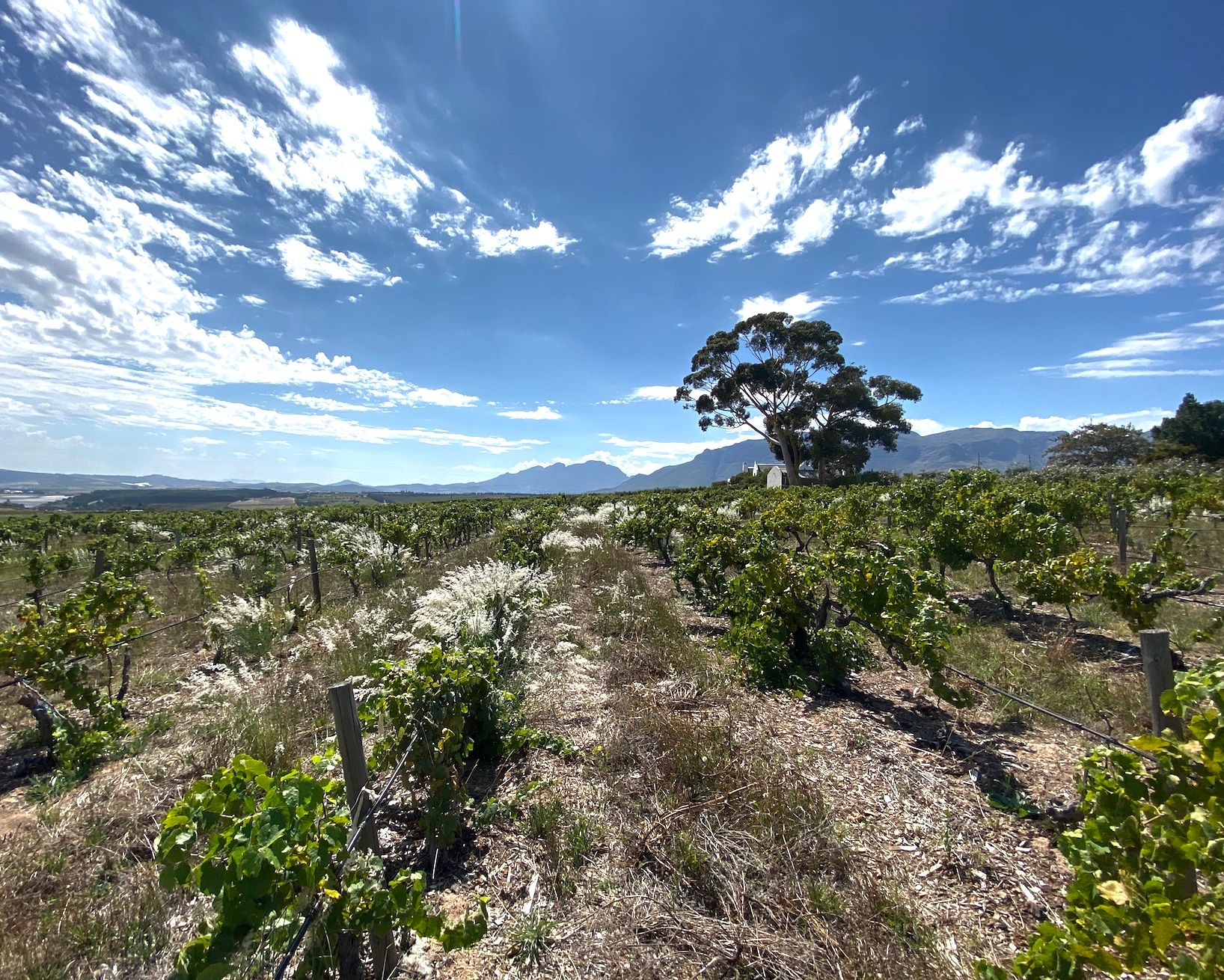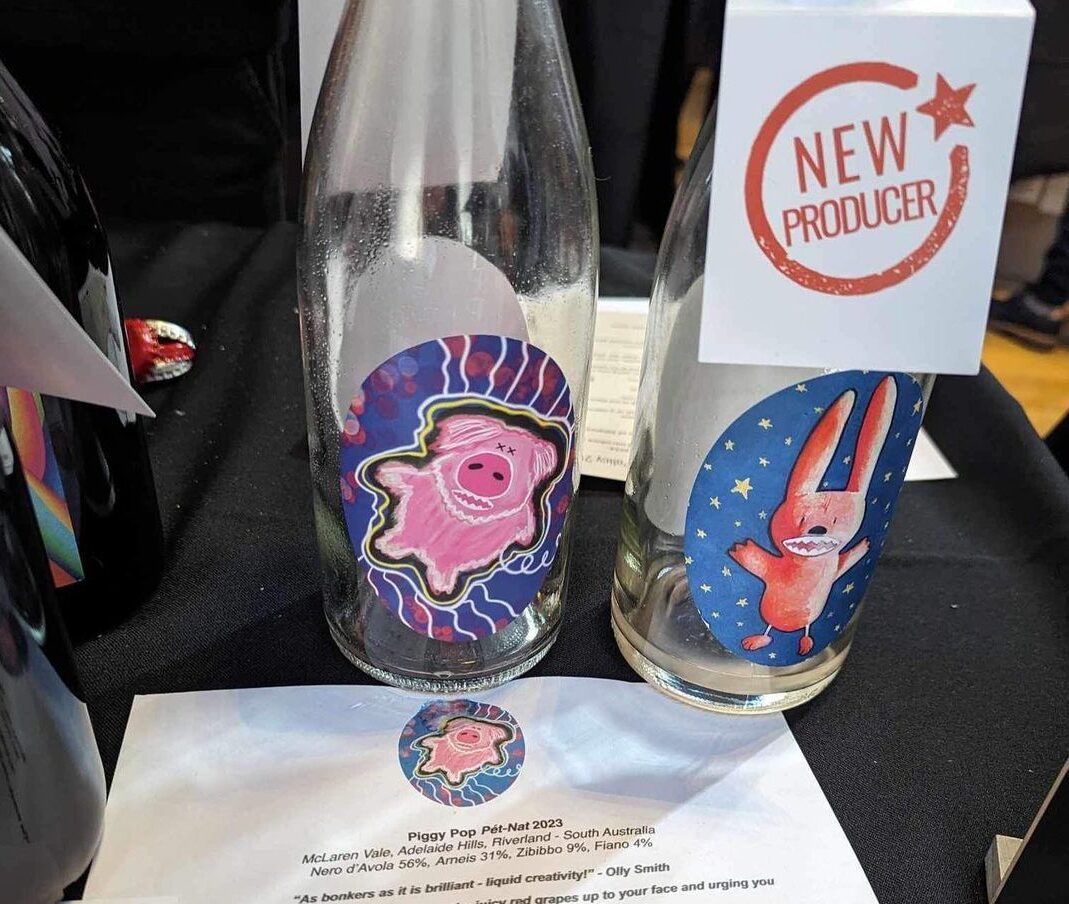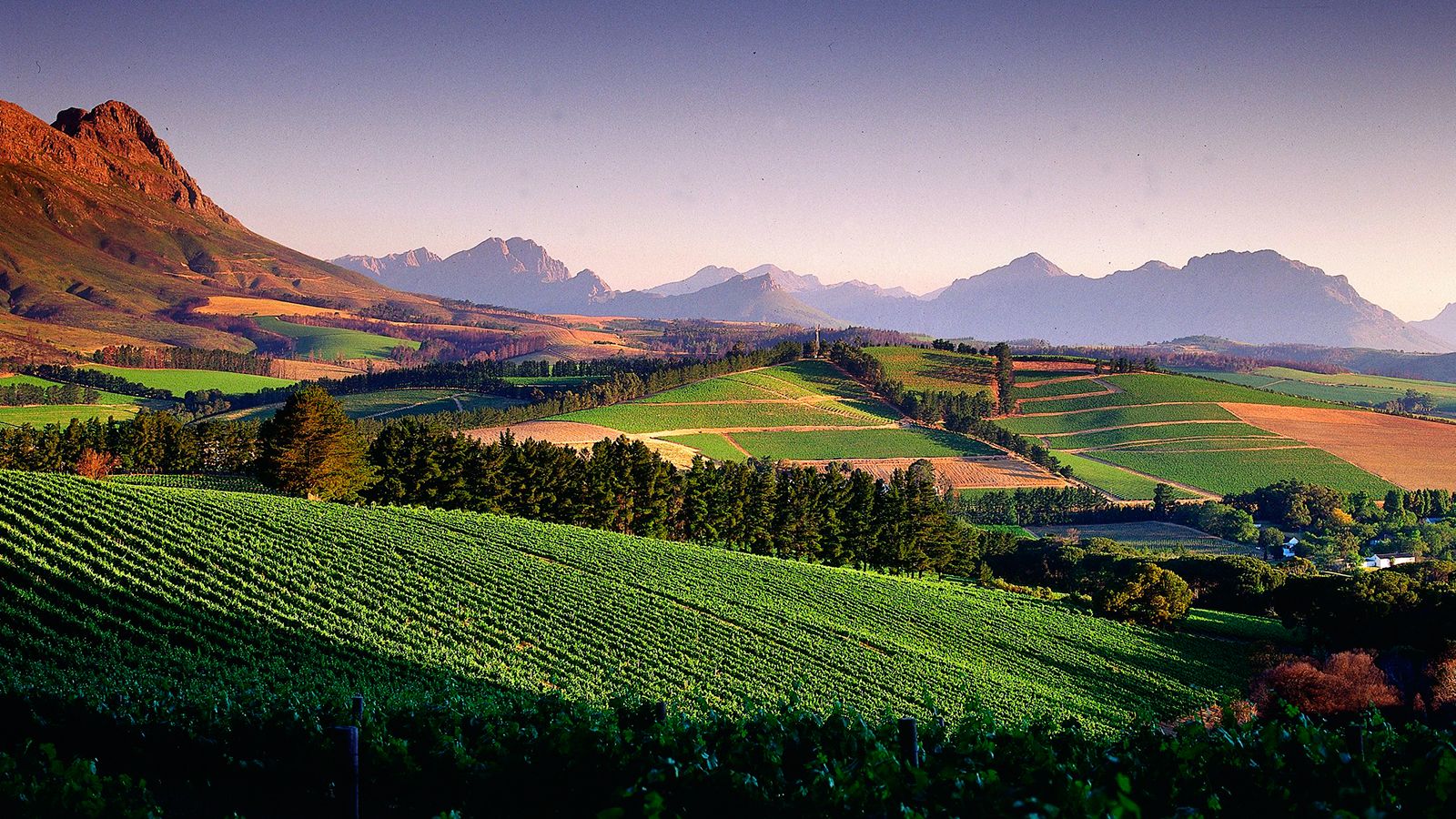The irony was not lost on Mzokhona Mvemwe. “It’s such a special occasion: a Zulu and a Boer drinking a glass of wine with English men and women - in London,” he said, to laughter from those assembled in the basement at 67 Pall Mall. What made it so special was the quality of the wines that Mvemwe, or Mzo as he is known, and Bruwer Raats have made together. Poignantly for them, it was the first vertical tasting of their wines outside South Africa that the pair had attended together.
Ten vintages of Mvemwe Raats MR de Compostella, one of South Africa’s most iconic Bordeaux blends, were unfurled between 2012 and 2022 (with no 2019 made as it was declassified to the Red Jasper label that year). In addition, the first vintage of an outstanding Mvemwe Raats white blend, christened MR Vesperi 2023, was made available for tasting here for the first time. More on that later, but first the MR Compostella range.
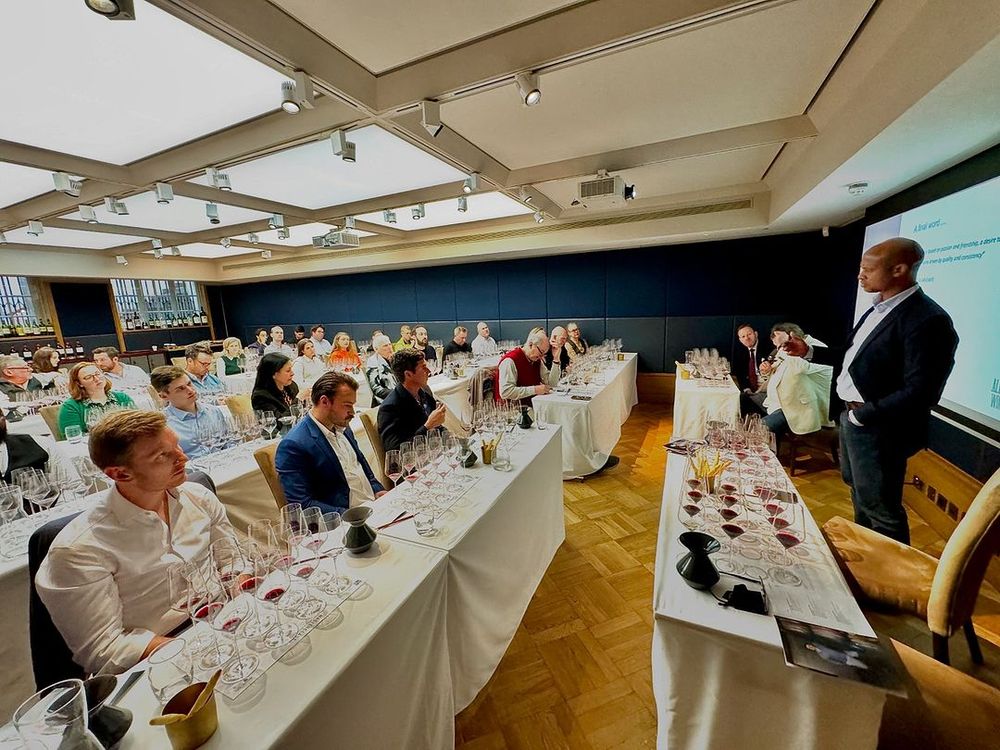
Special occasion: Mzokhona Mvemwe addresses the audience at 67 Pall Mall
How Greg Sherwood MW stole a march by spotting a winner
The history of the label is a compelling tale, for when it was first launched in 2004, it was met with minimal enthusiasm by the South African professional tasting fraternity. Platter’s Guide, the self-appointed bible of South African wines, grudgingly awarded the inaugural vintage a miserly three and a half stars. It was forced to admit in its next edition that ‘inherent wine quality had prompted 13 top SA restaurants and hotels to take 60% of the production, with the remainder exported.’
That remainder was largely taken by Greg Sherwood MW, the canny London-based South African importer, who recognised a great wine in the making much quicker than the Platter judges, many of whom were overly wedded to the views of Robert Parker. Sherwood has championed the medium-bodied MR de Compostella wines from the very start and gave a good insight into how, thanks to Parker’s influence, many South African winemakers made big, over-ripe, over-extracted, late-picked high alcohol reds in the first decade of the new millennium.

The team (l-r): Matt Wilkin MS, Greg Sherwood MW, Bruwer Raats, Mzo Mwemwe
“I was judging with other international critics at the Nederberg auction where South African archive stocks from 2000 to 2009 were submitted for blind qualitative tasting,” he said. “The wines were really ropey, tired, flat and baked, high in alcohol, lacking acidity and structure. In the immediate period post the 1994 elections, we still had the great Francophile history of winemaking. But in the late ‘90s and early 2000s, owing to Parker, the industry moved away from the classical quality that we’d prided ourselves on for decades.
“We thought this modernisation was the way forward, but what transpired was that some of the wines from 2000 to 2009 were some of the poorest-performing ageing wines South Africa has produced. So for Bruwer and Mzo to come along in that landscape and launch a project like MR de Compostella was quite exceptional. I started buying the wine from the very first vintage of 2004, which was a great year, and have done to this day. The quality bar was set and has never dropped.”
The story of how a legend was made
Raats is one of those delightfully humble and modest rugby-loving Afrikaners, who look hewn from stone. Built like a Springbok prop forward, he was actually a centre in his playing days.
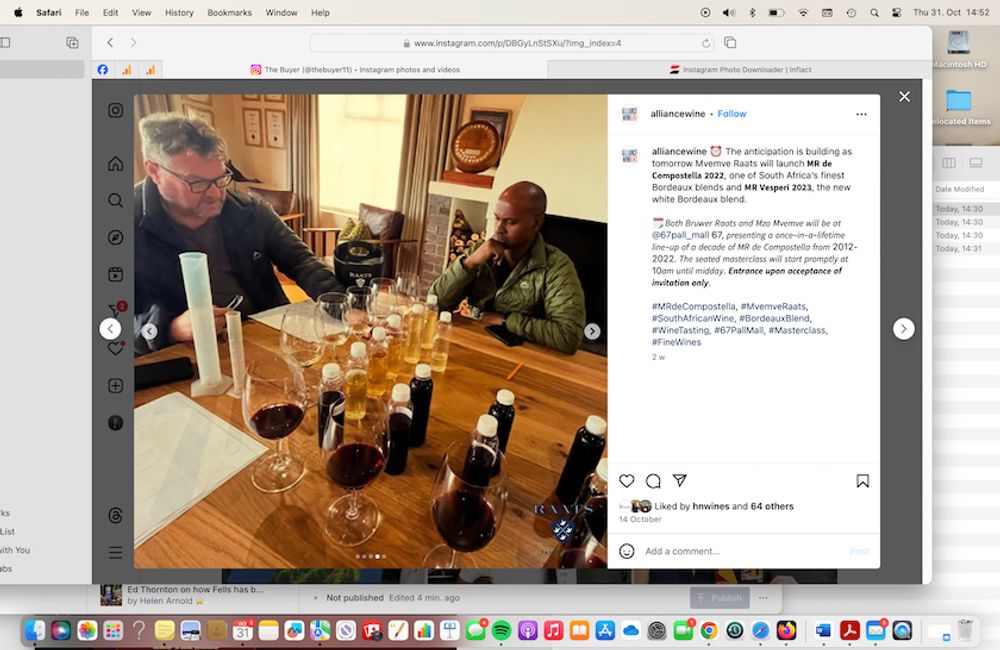
Blending the new wines
“This is a very special occasion,” he purred. “I’m just a bloody simple farmer, and this vertical tasting is very exciting as it’s the chance to show you can consistently produce quality but daunting as it’s ten years of your life, and there’s nowhere you can hide.”
“I was a nobody when we started Mvemve Raats. Mzo and I both wanted to create excellence - we never said we wanted to win awards. If you do the research, it’s probably the highest rated SA wine over the last 21 years, but that’s not what we wanted to do. We wanted to be consistent ultra-premium quality, with consistency the main focus. ”
In search of that, Raats went to great lengths to source the best fruit for the five Bordeaux varietals. This comes from a many as 13 different blocks from vines aged 10-25 years across the Stellenbosch district - the Cabernet Sauvignon and Petit Verdot from the Simonsberg ward; the Merlot from the Helderberg; and the Cabernet Franc and Malbec from the Polkadraai Hills, which have decomposed granite soils. Elsewhere, sandstone clay soils predominate.
Such is the quality of the Cabernet Franc that it forms the majority grape in six of the 10 vintages tasted (Cabernet Sauvignon being predominant in the other four - ’16, ’17, 21 and ’22). In 2019, a below par year for Cabernet Sauvignon across Stellenbosch, the varietal made up only 3%, with Malbec forming 43%. 2014 was the only other year of the ten vintages tasted where more Malbec than Cabernet Sauvignon was used.
“We make wine from each block individually, and then each score them out of 100, combining scores to reach an average,” Raats revealed. “If it’s under 90, we don’t use that wine in the blending process. It can take negotiation. With the 2014, I was adamant Merlot should not be included but Mzo insisted it should be. So we tasted two sample blends blind – one with Merlot and the other without – and we both picked the one with the Merlot.’
‘If the final blend is not as good as the previous five years, we declassify it, which happened in 2010 and 2019. It was only from 2014 that the South Africans started recognising and rating MR de Compostella for what it was. So even in South Africa we had a rough ride in the first 10 years, but now they think it’s fantastic. But it never deterred us from what we wanted to achieve.”

Special bond: Mzokhona Mvemwe and Bruwer Raats (l-r)
Raats’ love of Cabernet Franc explains why it is the most utilised grape in MR de Compostella.
“It was only first planted in South Africa in 1978 - by Meerlust - so people didn't really understand it,” he declared, “but for me personally, it had the elegance of Burgundy, the spiciness of Rhône and the structure of Bordeaux – all in one variety. So to me the best single variety to make was Cabernet Franc. But the reason why it hasn’t been commercialised is because it’s a very difficult variety and it’s very terroir specific. If you don't plant it on the right soil – low to medium potential – it will punish you severely.”
The oak regime is worth mentioning for the MR de Compostella.
“Oak is not a driving factor for us as it should be there to support the wine – we’re very mindful of not using too much oak,” Raats said. “But it plays a part in concentration and structure. On average, we use 10-15% new oak with the balance 2nd, 3rd, 4th and 5th fill. Malbec and Cabernet Sauvignon get the newer barrels and the other varieties the older. MR spends 22-26 months in barrel with medium toasting our preference. For the Vesperi white blend, we use blonde oak with light toasting.”
A new white 21 years in the making
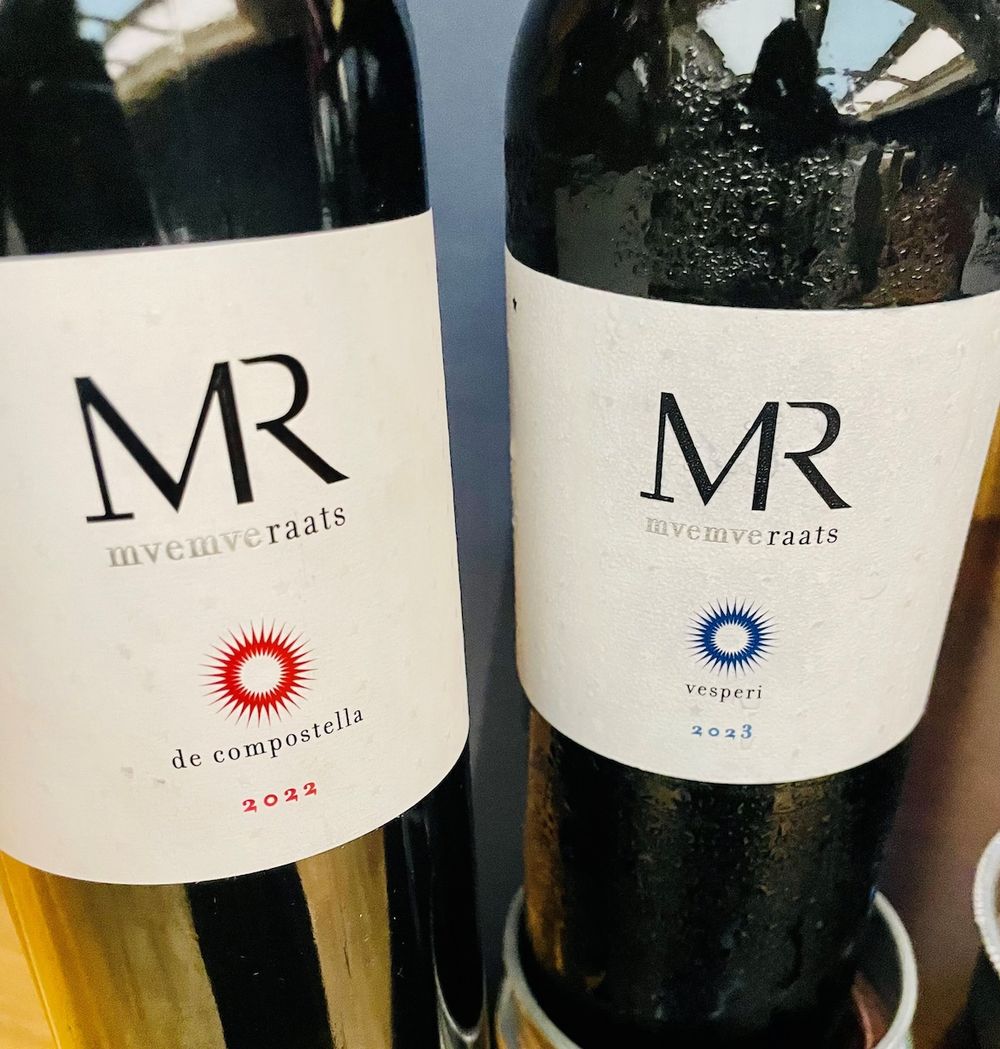
The Vesperi 2023 is the first vintage of what is only the second Mvemwe Raats label, and what a wine! Comprised of a third each of Chenin Blanc, Sauvignon Blanc and Semillon, it positively sang. This was its official launch, with the rest of the world not getting it until next April. Incredibly fleshy, dense and concentrated, it showed great balance and weight with a seductive glycerol mouthfeel offset by bright, bracing acidity.
“Vesperi means the ‘evening star,’” Raats explained. “It took us 21 years to release another MR, but we were only going to do it if we found the right vineyards. We added some Chenin Blanc to give it a South African flavour, although we used clone 29 from the Loire as it gives a smaller berry and lovely citrus flavours.”
Like its red counterparts, the Vesperi has genuine ageing potential, and while hard to resist now, should be even better in a few years time.
For now, though, Bruwer Raats and Mzo Mvemwe can bask in their creation of one of South Africa’s greatest brands - their MR de Compostella. “I like to recall one of the lines in a Cat Stevens song,” Raats professed: “It goes: ‘You may be here tomorrow, but your dream is not.’ I’m so happy because my dream is here today.”
Three MR de Compostellas that caught the eye
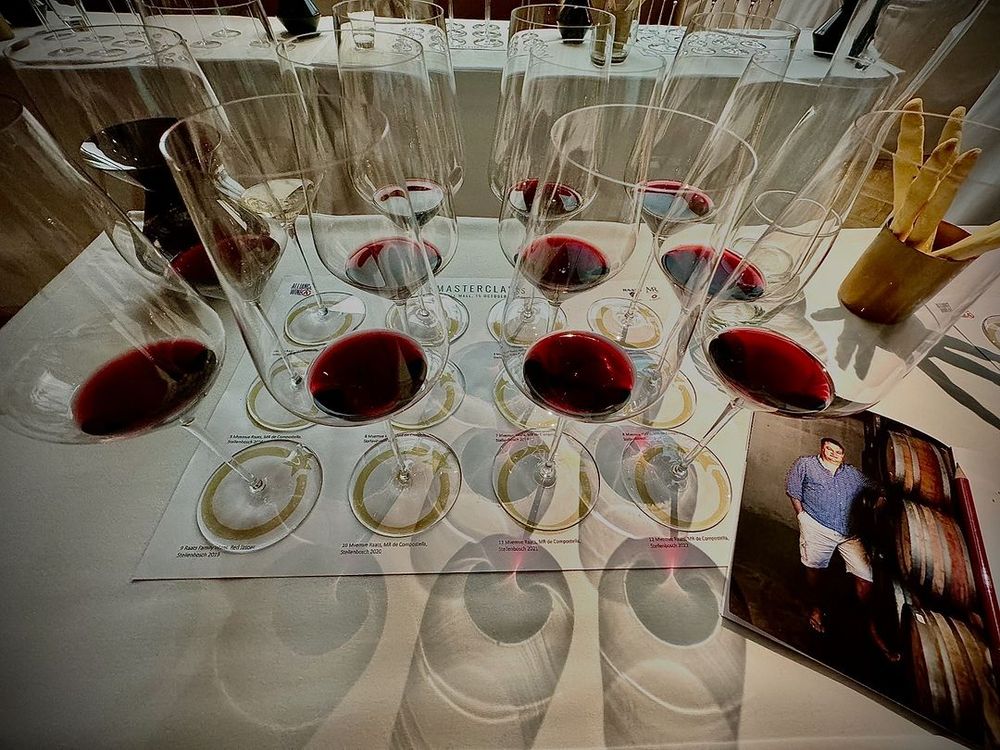
Mvemwe Raats, MR de Compostella, Stellenbosch 2015, 14.5% abv
40% Cabernet Franc, 32% Cabernet Sauvignon, 4% Malbec, 11% Petit Verdot, 13% Merlot.
One of the great vintages of the millennium. Wonderfully intense, dense fruit yet very elegant with beautifully integrated fine tannins. Vivacious acidity (5.9g/l TA) ensures freshness. Black fruit and cassis notes with herbal aromas. Multi-layered complexity with exceptional length.
Mvemwe Raats, MR de Compostella, Stellenbosch 2018, 14.5% abv
54% Cabernet Franc, 23% Cabernet Sauvignon, 15% Malbec, 3% Petit Verdot, 5% Merlot.
Massive concentration with fabulous intensity. Muscular yet harmonious tannins and plump, ripe black fruit. A supremely long finish.
Mvemwe Raats, MR de Compostella, Stellenbosch 2021, 14% abv
26% Cabernet Franc, 35% Cabernet Sauvignon, 17% Malbec, 5% Petit Verdot, 16% Merlot.
Another exceptional vintage. Lovely balance between bright acidity, deep ripe fruit and suave tannins. Complex and very persistent, with a long life ahead.
The wines of Mvemwe Raats are imported and sold in the UK through Alliance Wine which is a commercial partner of The Buyer. To discover more about them click here.

